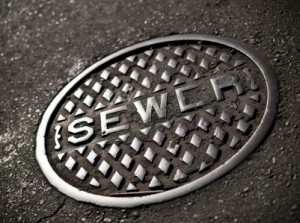If  you follow us on Facebook or Twitter, you’ve noticed that we reference sewer work a lot. Below is the first post in a four-part series that take readers through the process of completing sewer work from start to finish.
you follow us on Facebook or Twitter, you’ve noticed that we reference sewer work a lot. Below is the first post in a four-part series that take readers through the process of completing sewer work from start to finish.
The damage caused by a broken sewer can be messy and expensive to clean up. Excess water and sewage in your home can present major health issues for your family. At Approved Plumbing, we’ve completed thousands of sewer repairs and replacements. If you think you may have a sewer problem, it’s best to get it checked out right away. Here are a few warning signs that indicate you might have a sewer problem:
- You hear gurgling coming from your drain or tub
- You have sewage coming up through your drain or sink
If you experience these signs, call a professional right away. It’s always better to be safe than sorry. Of course the bad news is not all homeowners experience these warning signs. You may come home to find your basement flooded which is unfortunately how things go sometimes.
One way to help judge your need for a sewer repair is to look at when the home was built. Homes built prior to the early 1980’s typically have clay and cast iron piping. It’s only a matter of time before this will need to be replaced. Homes with large trees are even more susceptible to sewer damage from roots, so be aware of that.
After the mid-1980’s, homes were built using PVC piping which will last upwards of 100 years. As long as everything was installed correctly, you should be ok. But be aware that we’ve run into homes that were built five years ago with PVC pipe and it needs to be replaced – it was either installed incorrectly or landscaping played a part in damaging the pipes.
Once you know that you’re in need of sewer work, hiring the RIGHT plumbing contractor is key, and we’ll talk about that in our next post!



Leave a Reply